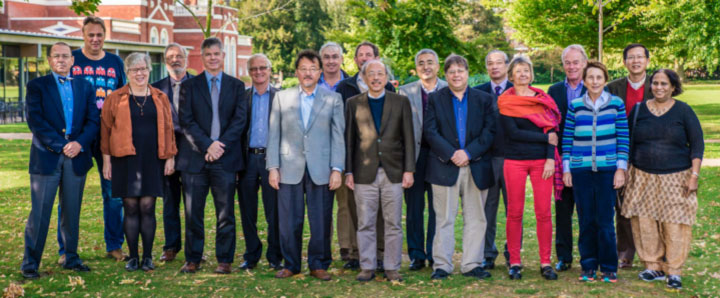In the fourth quarter of 2014, 2503 experimentally-determined structures were deposited to the PDB archive for a total of 10364 entries deposited in the year.
2014 was the International Year of Crystallography. Of all structures deposited this year, 92.6% were determined by X-ray crystallographic methods; 5.0% were determined by NMR methods. 86.0% were deposited with a release status of hold until publication; 11.0% were released as soon as annotation of the entry was complete; and 3.0% were held until a particular date.
The PDB archive reached a milestone 100,000 released entries in May 2014. 9414 new PDB structures were released in 2014. They account for ~9% of the current total holdings of 105,465.
wwPDB launched the Deposition Tool for structures determined using X-ray crystallography on January 27, 2014 as part of the new Deposition and Annotation System. More than 3000 structures have been deposited and annotated using this system, with more than 1200 structures already released in the archive. Improvements to this system are regularly incorporated based on user feedback.
As a result of this successful release, RCSB PDB and PDBj will only accept depositions of structures determined from X-ray crystallographic experiments from the wwPDB Deposition Tool beginning January 27, 2015. At this time, the legacy ADIT deposition system will no longer accept new submissions of crystal structures. In-progress ADIT depositions of X-ray crystallographic structures will be able to access their deposition sessions until July 19, 2015.
ADIT will continue to accept depositions from other experimental methods. Deposition tools for NMR and 3DEM are being developed by the wwPDB.
Features of the new system include use of the PDBx/mmCIF data format, which produces more uniform data; the ability to replace data files pre- and post-deposition; enhanced communication; improved annotation; and geometric and experimental data checking based on recommendations from expert task forces. Detailed information and video tutorials are available.
Questions and comments should be sent to info@wwpdb.org.
Small molecule annotation for the Protein Data Bank
Sanchayita Sen, Jasmine Young, John M. Berrisford, Minyu Chen, Matthew J. Conroy, Shuchismita Dutta, Luigi Di Costanzo, Guanghua Gao, Sutapa Ghosh, Brian P. Hudson, Reiko Igarashi, Yumiko Kengaku, Yuhe Liang, Ezra Peisach, Irina Persikova, Abhik Mukhopadhyay, Buvaneswari Coimbatore Narayanan, Gaurav Sahni, Junko Sato, Monica Sekharan, Chenghua Shao
Lihua Tan, Marina A. Zhuravleva
(2014) Database
doi: 10.1093/database/bau116
PDBe at EMBL-EBI in Hinxton, United Kingdom hosted several wwPDB events in October:

The wwPDB Advisory Committee